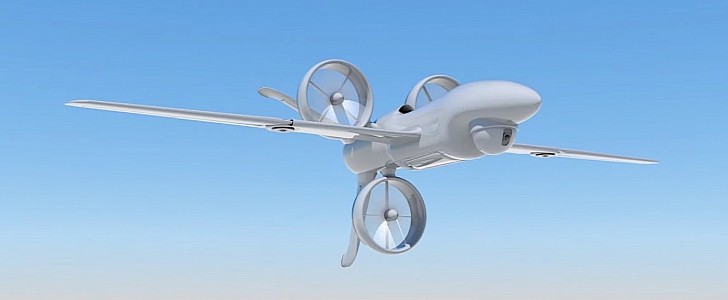Nowadays, it seems that everyone is having a go at coming up with vertical takeoff and landing (VTOL) machines, mostly for the purpose of providing new means of transportation and delivery of goods for our overcrowded cities. Seeing this, not even DARPA can stay away.
Late last week, the R&D organization announced something called ANCILLARY. That’s short for AdvaNced airCraft Infrastructure-Less Launch And RecoverY X-Plane, and it’s a program meant to develop the next generation of VTOLs, even if the current one doesn’t actually exist yet.
As most of you already know, DARPA is in the business of making stuff that could benefit first and foremost the American military, and only then the civilians at large. In the case of ANCILLARY, the goal is simple: give VTOLs capabilities current prototypes can only dream of.
Because the military often has to operate in strict (and restricted) environments, the VTOLs (unmanned, in this case) it could one day use will have to be able to launch from ship flight decks or other unprepared and unequipped areas, without the supporting logistics. These machines will also have to be lightweight, able to carry a high-payload, and capable of staying in the air for a long period of time.
“The ability for the warfighter to deploy and retrieve such systems in challenging conditions without reliance on infrastructure would minimize personnel, costs, and vulnerability during sensitive operations,” said in a statement Steve Komadina, the DARPA program manager for ANCILLARY.
To draw companies and engineers into the program, DARPA will hold a Proposers Day and Expo on September 20, and asks “industry and academic technologists and researchers who could supply needed component and manufacturing techniques,” not to miss it.
The research agency did not make public a timetable for ANCILLARY development, so we have no idea when a new VTOL tech derived from this will hit the real world.
As most of you already know, DARPA is in the business of making stuff that could benefit first and foremost the American military, and only then the civilians at large. In the case of ANCILLARY, the goal is simple: give VTOLs capabilities current prototypes can only dream of.
Because the military often has to operate in strict (and restricted) environments, the VTOLs (unmanned, in this case) it could one day use will have to be able to launch from ship flight decks or other unprepared and unequipped areas, without the supporting logistics. These machines will also have to be lightweight, able to carry a high-payload, and capable of staying in the air for a long period of time.
“The ability for the warfighter to deploy and retrieve such systems in challenging conditions without reliance on infrastructure would minimize personnel, costs, and vulnerability during sensitive operations,” said in a statement Steve Komadina, the DARPA program manager for ANCILLARY.
To draw companies and engineers into the program, DARPA will hold a Proposers Day and Expo on September 20, and asks “industry and academic technologists and researchers who could supply needed component and manufacturing techniques,” not to miss it.
The research agency did not make public a timetable for ANCILLARY development, so we have no idea when a new VTOL tech derived from this will hit the real world.












